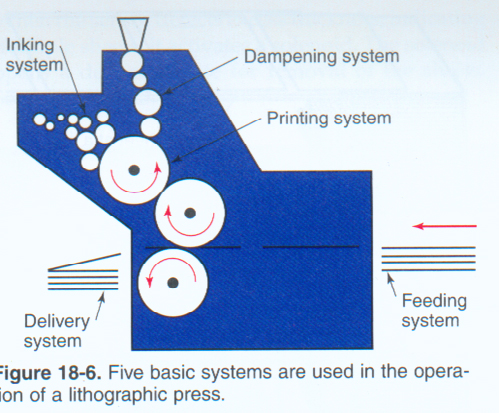
( Note that because the ink is transferred
twice, not once, as in letterpress, an offset plate is positive and right
reading, like the original repro and the final printed page.)
Due to the inconvenience and expense of lithographic stones, the stone
was eventually replaced with steel plates. These plates were lighter,
cheaper, and generally a more manageable printing implement. The first
experimentation of using plate substitutes, done by Senefelder himself,
was done using zinc. These zinc (and later aluminum) plates were promoted
in America as early as 1849 as the ideal medium for reproducing simple
outline drawings. It was during the 1870's that the gradual transition
from stone to zinc began in America. These rotary machines simply retained
the cylinder and the delivery apparatus of the flat-bed machine, while
replacing the stone bed and ink slab by a second cylinder, which is called
the blanket cylinder. This produced a smooth, quiet-running machine that
virtually doubled production. The process today is highly mechanical and
automated. There are a variety of inks and a waterless system has been
developed
